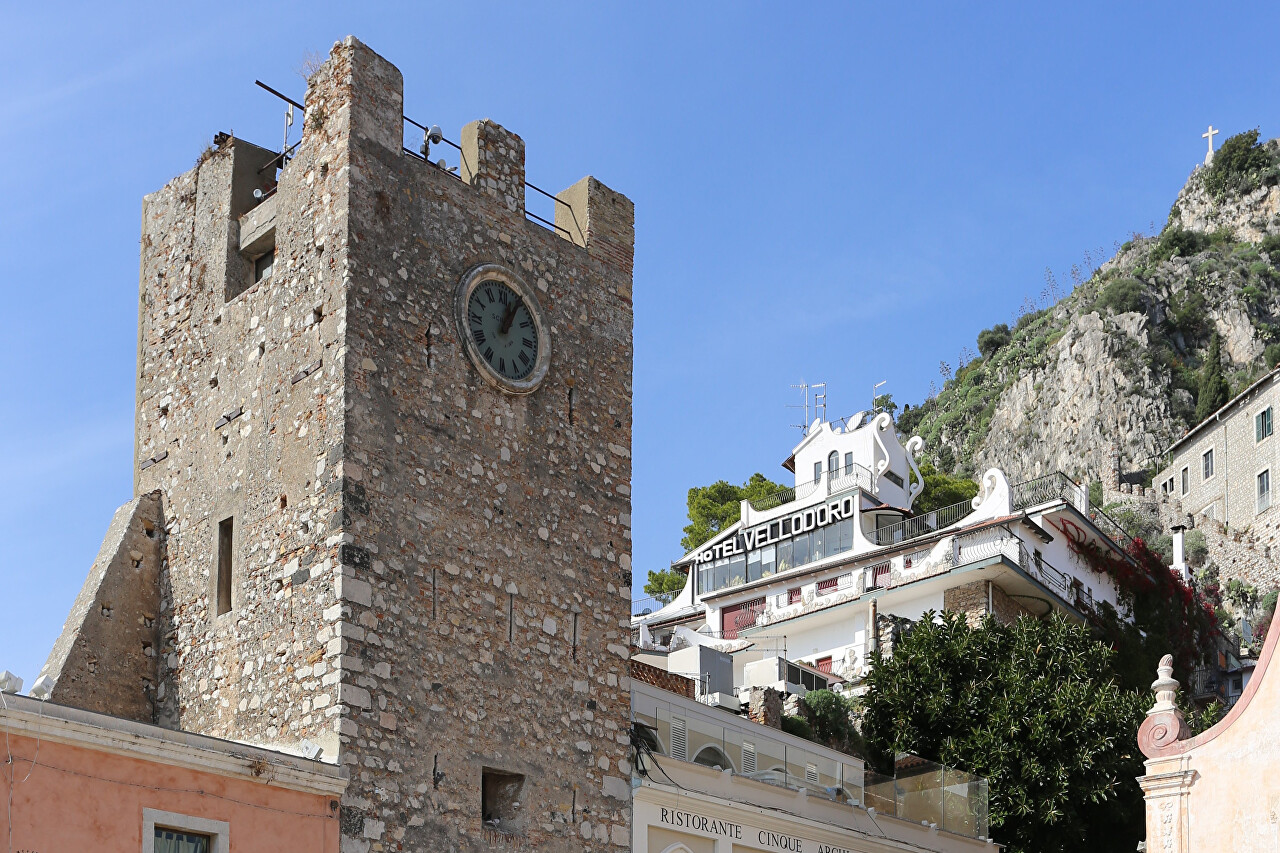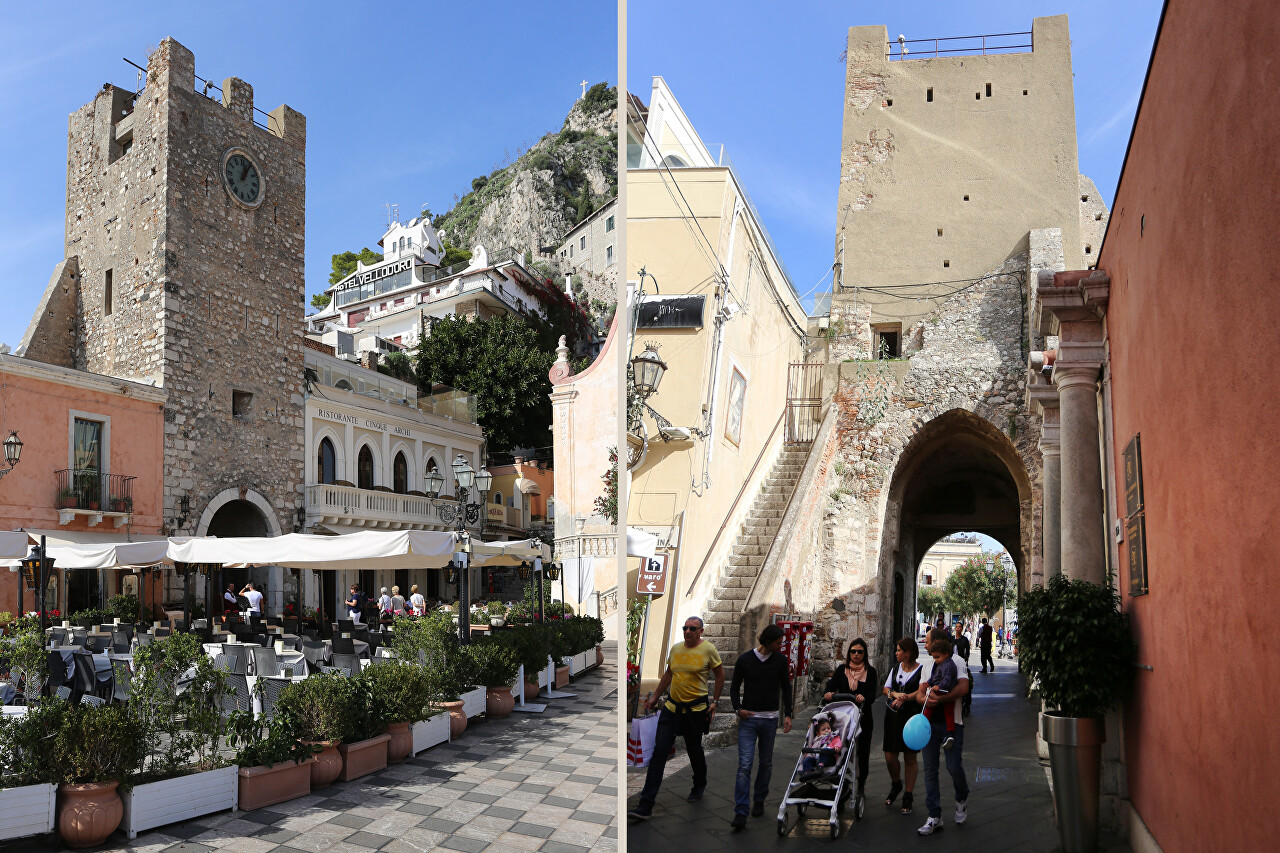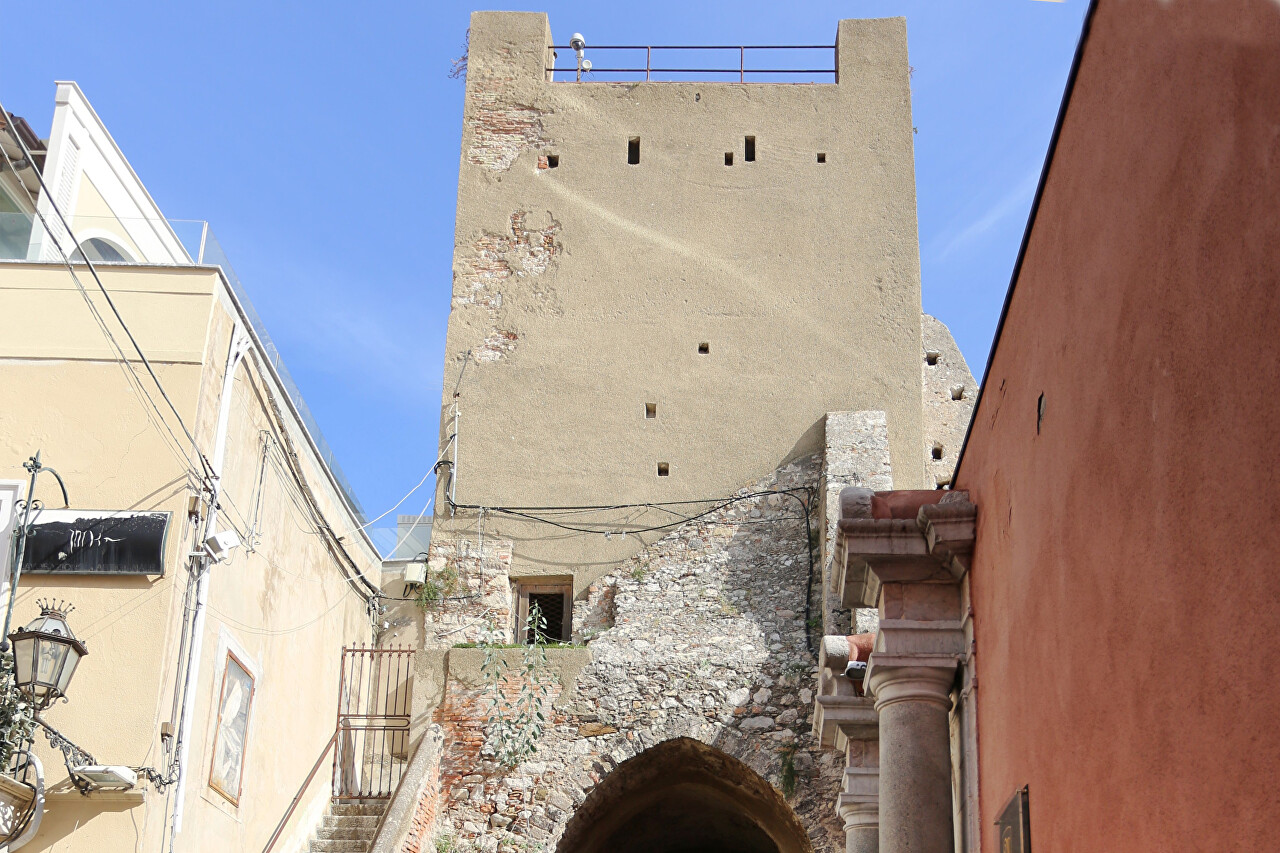Тorre dell'Orologio, Taormina
The Square of April 9 divides the center of Taormina into two parts: ancient and medieval. By the end of the first millennium, only ruins remained of the large Greek and later Roman city of Tavormenium, and the entire population was concentrated in a small quarter called Borgo Medievale (medieval village). The town was surrounded by a defensive wall with towers and gates to the west and east, built in the 12th century. In turn, the foundations of an ancient wall dating back to the 4th century BC were used for this purpose. During the Renaissance, the area to the east of the wall was rebuilt, and a new Porta Messina gate was built there. The medieval gate turned out to be in the center of the city and they began to be called Porta di Mezzo (middle gate). In 1676, the French troops of Louis XIV completely destroyed the Middle Gate during the siege of Taormina. Almost a century later, the gate was rebuilt, and in 1769 a large clock made by the famous French Chevalier workshop was installed on the tower. The mechanism is mounted on a cast-iron frame and has a pendulum with precise adjustment. The drive is carried out by weights that are lifted every forty-eight hours. Since then, the gate has been officially named the Clock Tower (Torre dell'Orologio). In 1881, bells were installed on the tower, they can be heard at the feast in honor of the patron saint of Taormina, St. Pancras, which is held on July 9, as well as on the day of the mayoral election.

..

..

..
